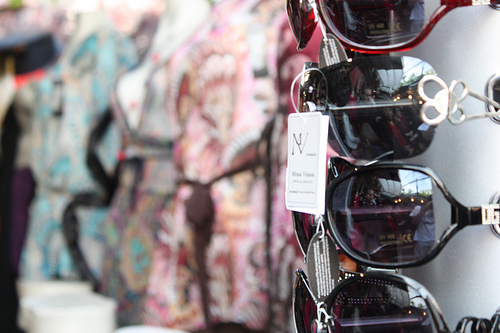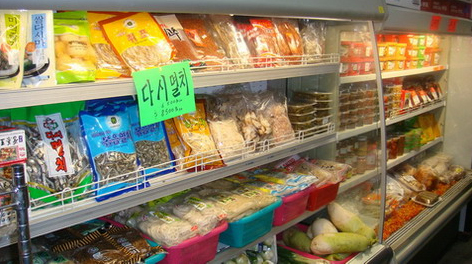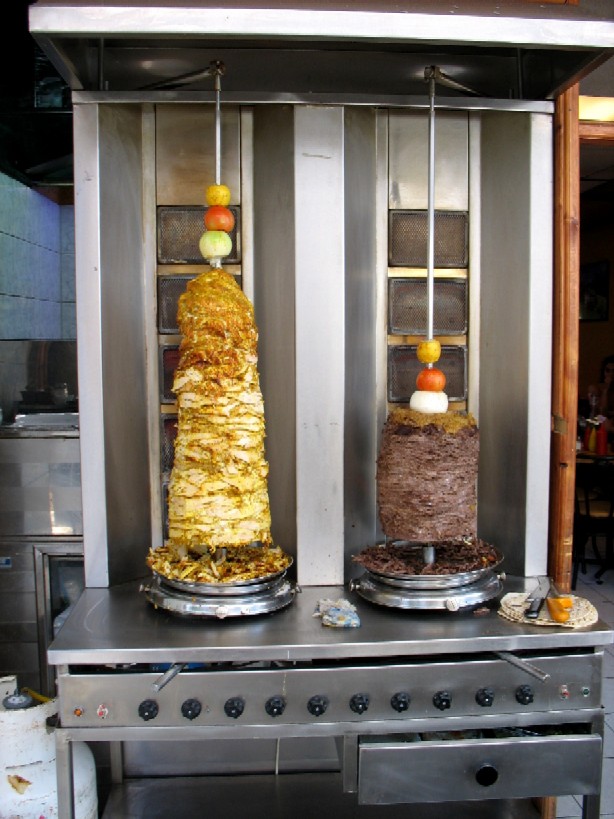A couple weeks ago, I took you all on a joy walk through my hood, Lastarria / Bellas Artes. Santiago’s neighborhoods are the soul of this city. The press and travel guides, whose names shall remain unmentioned, have done a dismal job of portraying this aspect of Santiago accurately, at least in the past. They tend to write off the whole city as a South American Suburban version of Orange County, California. Obviously they never dove into these areas full of history and life–like Patronato. These neighborhoods reflect their multi-ethnic residents, full of color and life, who bring meaning and a spark to these metropolis.
Perhaps no area in Santiago is as multi-ethnic nor intense as Patronato. Once part of the area known as La Chimba during colonization, which means “other side” (of the river) in quechua, today Patronato is delimited by the streets of Recoleta to the west, Loreto to the east, Bellavista to the south and Dominica to the north. Since its founding’s in the early 1900s, it has been home to many immigrant groups arriving in Chile for a new life, primarily Arabs (Palestinians and Syrians), Koreans, and today, a massive influx of Chinese. A tad off subject yet still relevant, did you all know that Chile has the largest Palestinian community outside of Palestine? Both Muslim and Christian.
Crossing the river from Bellas Artes over into Patronato, the landscape changes dramatically. The facades go back to the early 1900s. Tall, grand buildings painted in a shade of rainbows that are just a tad shabby. The store fronts become more popular with imposing neon signs and throbbing like a disco. Clothing, clothing everywhere. Yes, this is the garment district—with an Asia-meets-Middle Eastern-meets Latin vibe. Funky? Oh yeah.
The streets of Patronato feel like a labyrinth. At any given moment, especially Saturdays, they are filled to the brim with crowds. Elbow, push, shove your way to the next corner. Window shopping, while possible takes some patience and diligence. To get started, let’s depart from the Fine Arts museum. Cross the Loreto Bridge. Be careful looking both ways at Santa María Street. For some reason, this corner seems to have an invisible sign of “Hit Pedestrians, 10 points”. As you stroll over the scenic, murky waters of the Mapocho, gaze at the mountains that form a wall. The Chilean Wall. Thankfully for the city, a river clean up project is underway. According to some ambitious mayors and planners, a series of locks could eventually create a waterfront. Some day…
As you walk up Loreto Street, stop by the restobar El Toro for some homey pastas and a vodka tonic. Don’t flinch when they serve a glass of vodka on the rocks and tonic on the side. This edgy bar is a favorite with the gay crowd and one of the few places open on Sunday for lunch/brunch with outdoor tables. I personally love the crayons to doodle on the place mats as I wait for my cannelloni or big salad.
Up on Antonia Lopez de Bello, hang a left. Enter the world of cheap fashion designs, the heart of Patronato. Please don’t go to Patronato expecting designer clothing nor quality. It is disposable fashion with every imaginable style and accessory. Vuitton knock-offs? Check. Mardi Gras beads? Check. Halter tops that seem to be popular with muffin top school girls? Check. More polyester than you’ll ever see. Careful with your smokes, an innocent butt could cause a blaze in this synthetic world.
So why do I love Patronato? It’s full of characters. It’s real. And damn, there’s some good food ethnic food to be bought (for provisions) and eaten while there. Keep in mind that Middle Eastern immigrants, primarily from Syria and Palestine, first settled here in the 1920s. Although many of those families have since moved to other areas of town, their businesses are still based here as and a legacy of their ethnic restaurants and specialty shops pepper the area. Today, contributing to cacophony of languages and music, colors and smells, is a new wave of Korean immigrants who have opened a plethora of Asian supermarkets and Korean restaurants. Patronato is an interesting study in Chile’s immigrant communities to say the least.
To get that gastronomic study underway, stop at Sukine on Antonia Lopez de Bello 244 (735-8693). Korean food in Santiago? Yes, you read that right. The largest Asian immigration today is from Korea, so it stands to reason that you can find some pretty authentic food here. Don’t walk too fast or you will pass it. A-hole-in-the-wall kind of place, most patrons are Korean, but the one Spanish-speaking waitress will kindly indoctrinate you to the finer points of this lesser-known Asian cuisine. Order the wok with marinated pork and vegetables prepared at your table. It easily feeds two with all the pungent, fermented side dishes like chili and the ubiquitous kimchi. Although your shirt may reek of garlic upon leaving, it is a rather unique, and decent, exploration into the Asian immigrant community in Santiago.
Across the street is China House, one of the four Asian grocers on this street. These are the new kids on the block, but don’t be confused: the two storefronts adjacent to each other stock somewhat different items. This is a great place to stock up on harder-to-find Chinese and Southeast Asian ingredients. They carry a dizzying selection: dried seaweed, bean sauce, chili paste and sambal, sheets of dried bean curd, wasabi peas, soba, Chinese egg noodles, Chinese oyster sauce, black vinegar, sesame oil, and curry paste, among many others. This is also the only Asian store in Patronato that is open on Sundays.
Turn right and head up Rio de Janeiro. You are wandering into Middle Eastern territory now. The Palestinian flag flapping in the wind is your visual marker that you are close to Santiago’s tastiest schwarma, El Rinconcito Arábe, Eusebio Lillo 506, corner Manzano (735 8840, 08-215-3465). Perched on a colorful corner of the Patronato garment district, El Rinconcito Arábe was one of the first Middle Eastern joints in the neighborhood. This tiny locale has only a couple of tables and is attended by owner Nabil Abuhadba. He serves up classic favorites like meat-stuffed vegetables (grape leaves, baby zucchini, eggplant, and chilies), kibbe, and hummus. He is also known across town for his mean schwarma. He skillfully marinates thin slices of meat with cumin, olive oil and lemon juice and slow roasts them. As he slices them off into a warm pita and piles on the fresh tomato and tahini, let him teach you some of the finer points of Chilean cussing (i.e. huevón “mania”).
Continue past embroidery firms, and sweatshirt companies to Al Mustafa at Río de Janeiro 405, with Eusebio Lillo (737 5920). I am not a dessert eater but I have a total weakness for Middle Eastern sweets. Goey, yummy heaven with mint tea. Recently opened by new immigrants from Palestine, their specialties are dainty little Middle Eastern pastries like baklawa, borma, sesame cookies, semolina cakes, borma, and ceregli. The store smells like sweet, sticky syrup, and the pastries are so beautiful and tempting, you can hardly wait to get home to tuck into them. Ideal for a dessert buffet, when in Patronato, stop by for a snack and support a new immigrant family’s dream of prosperity in the New World.
At Santa Filomena, you have two options. Bare left and you get to the Patronato metro stop (yellow line) and entrance to the expansive La Vega produce market, my favorite place in all of Santiago. Bare right and back at Loreto, you get to one of Santiago’s hottest restaurants right now, Vietnam Discovery, if you can get a table. Here a French-Thai couple opened a six-table, eternally overbooked restaurant serving lots of the classics. Very cute and on the fringes of the hood, I hope it encourages more young, ethnic places to open!
Heading north on Río de Janeiro towards Dominica, if you are having a good lamb supplier crisis, look no farther. Hermanos Urrutia, on Buenos Aires 305, corner Río de Janeiro, Recoleta (737 8302) to the rescue. For over fifty years, the Palestinian and Syrian communities have been coming to these brothers to buy fresh lamb that was raised in the pastures of Marchigue in the Colchagua valley. The clientele of this little emporium arrive by dato and take home whole legs of lamb, lamb shank, lamb filet, or an entire rack of lamb to grill at fantastic prices. Many days, they also have kibbe, Arab-style ground beef with spices, bulghur, and parsley, and syrupy sweet semolina cakes. The brothers are a riot: now in their late 70s, they speak in rapid Arabic while boogying to salsa on the radio.
While the economic blood of Patronato may be clothing and accessories, with a dash of ethnic food, this is not your massive mall stuff. It is still family-run small businesses. They push good prices and the people come. For younger, hipper designs, visit the stores on Manzano between Antonia Lopez de Bello and Bellavista (keep in mind the polyester thing though). Certainly Patronato is a crash of cultures, buyers, shoppers, police, Chileans, foreigners, and a hell of a lot of garments. Check it out. It’s real. It’s bright. It’s flashy. It’s exotic. It freaking rocks.
To get more tips and “datos” on Patronato’s ethnic haunts, authentic restaurants, shops in addition to the low down on Santiago’s gastronomic scene, wines, and neighborhoods, get Liz’s Eat Wine Santiago foodie e-guide. It’s the first English-language food and drink to the capital. Download it immediately for less than the cost of one mediocre meal.
Thanks to Barrio Patronato and Mi Nuevo Hogar for the pics of the Patronato.
















